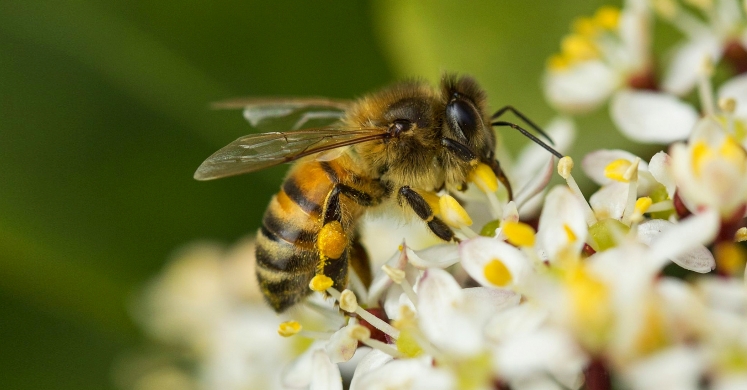Blog

#bioPGH Blog: Honey Bees
 A resource of Biophilia: Pittsburgh, #bioPGH is a weekly blog and social media series that aims to encourage both children and adults to reconnect with nature and enjoy what each of our distinctive seasons has to offer. From the best times to plant seasonal flora and enjoy their peak blooms, to astronomical events and creatures to keep an eye and ear out for, Phipps will keep you in the know with what’s going on in our environment!
A resource of Biophilia: Pittsburgh, #bioPGH is a weekly blog and social media series that aims to encourage both children and adults to reconnect with nature and enjoy what each of our distinctive seasons has to offer. From the best times to plant seasonal flora and enjoy their peak blooms, to astronomical events and creatures to keep an eye and ear out for, Phipps will keep you in the know with what’s going on in our environment!
Warmer weather appears to be on the docket for the next several days here in Pittsburgh and with it a slew of insects are beginning to emerge and become increasingly active. One such insect is the western, or European, honey bee (Apis mellifera). The western honey bee is a member of the Apidae family, which is comprised of over 5,700 species of bees from around the world. In addition to the honey bee, the Apidae family also includes the bumble bee and carpenter bee. Members of the Apidae family are some of the most recognizable bee species with their considerably fuzzy bodies and fast-flying dashes from flower to flower. Did you know that honey bees do not hibernate during the winter months? When temperatures outside dip below 40 degrees Fahrenheit, honey bees huddle together around the queen, brood in what is known as a “winter cluster,” and "shiver" in order to keep the hive warm. The bees also take turns feeding on honey and pollen stores and rotating to the edges of the cluster so no individual bee gets too cold. Once temperatures begin to rise into the 50s and beyond, however, honey bees will venture from their hives in search of nectar and pollen from blooming flowers. So if you’ve been wondering if you really happened to see some bees buzzing about during the handful of 40 – 50 degree days we’ve had during our warmer than usual winter, you just may have! While the majority of bees eat nectar, it is only honey bees that make honey and consume it when flowering plants, and the nectar they produce, are scarce.
Connecting to the Outdoors Tip: Beekeeping is flourishing not only as a hobby, but as an occupation. In addition to providing people with the delicious, natural and beneficial treat of honey, honey bees are also considered one of the most economically important bee pollinators in the world. Of the one-hundred major American staple crops grown across the country, seventy require pollination by bees in order to produce the fruits and seeds for consumption by both humans and other animal species! Did you know that Pittsburgh just happens to be home to the United States’ first community apiary, or collection of bee hives? The community apiary, established and operated by Burgh Bees, is situated in a vacant lot along the East Busway and hosts a pollinator garden maintained by community volunteers and provides training on how to establish and maintain hives for up-and-coming beekeepers. If you’re interested in beekeeping or would just like to learn more about bees and proper management, visit Burgh Bees’ website for more information and a list of upcoming events and classes. With the warm weather finally upon us it’s the perfect time to get outside and start planting! Consider creating your own pollinator garden by simply scattering native Northeastern wildflower seeds in barren areas, or by crafting seed bombs that you can either toss or plant directly into the soil, a perfect activity to help keep little hands active and occupied outside all while helping the bees! Honey bees are also quite the dancers and use a choreographed routine known as a “waggle dance” to communicate important information about food sources. Try choreographing your own “waggle dance” to convey a message to friends and family. Not only is it a unique way to hold a conversation, it gets you moving, too!
Continue the Conversation: Share your nature discoveries with our community by posting to Twitter and Instagram with hashtag #bioPGH, and R.S.V.P. to attend our next Biophilia: Pittsburgh meeting.
Additional Resources:
Honeybee - National Geographic
How Honey Bees Keep Warm in Winter - About Education
Save Our Bees - Natural Resources Defense Council
Which Foods Depend on Bees? - Canada Agriculture and Food Museum
Apoidea Apiary
Burgh Bees
Northeast Wildflower Seeds - American Meadows
DIY Seed Bombs - Hello Nature
The Dance Language of Honey Bees - VetSci
Select photos © Paul g. Wiegman

